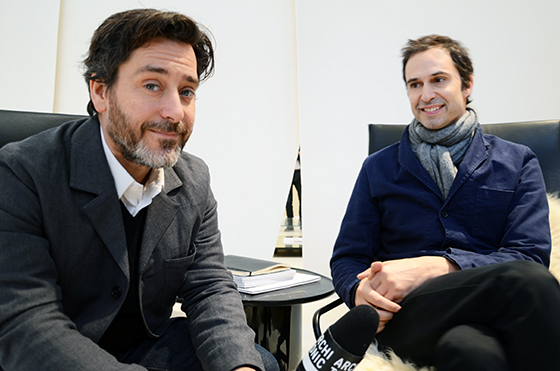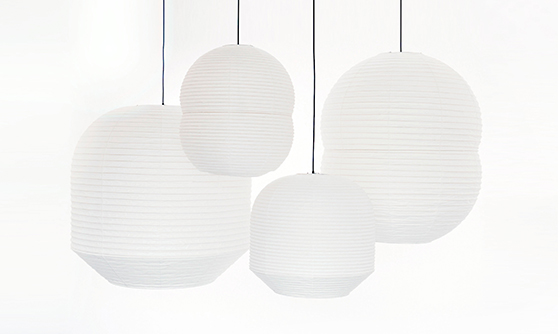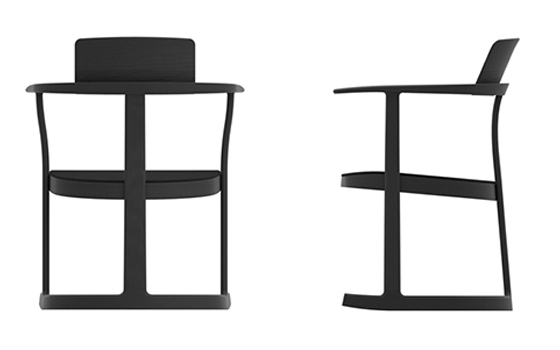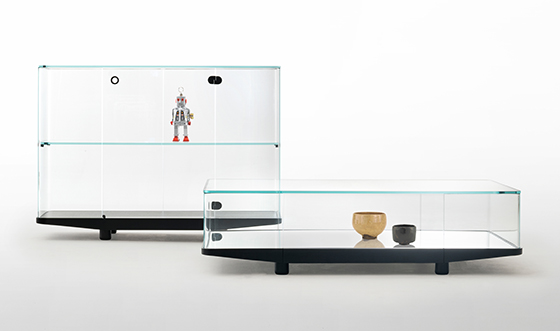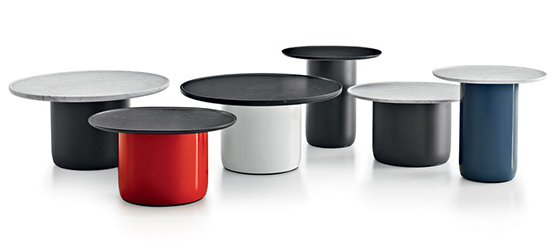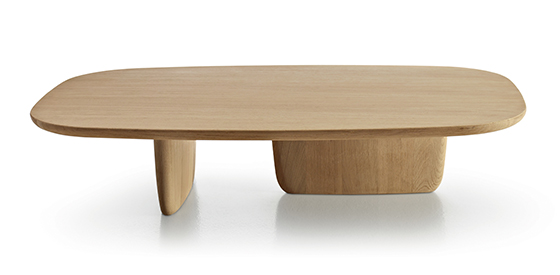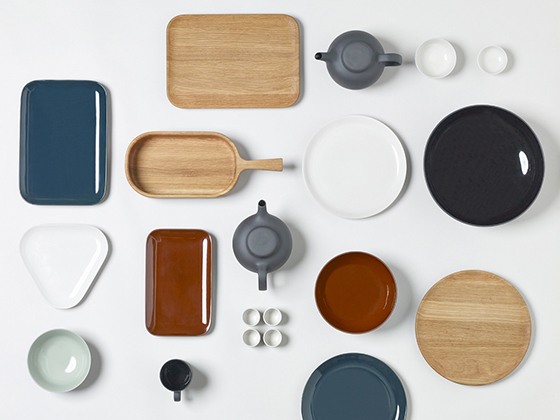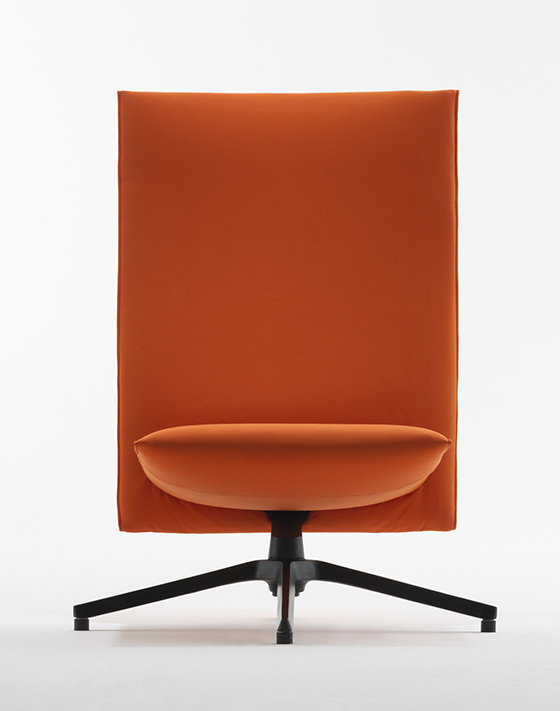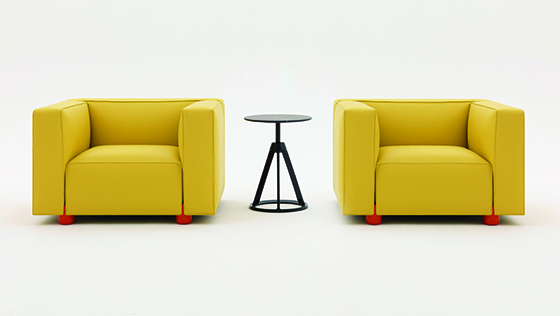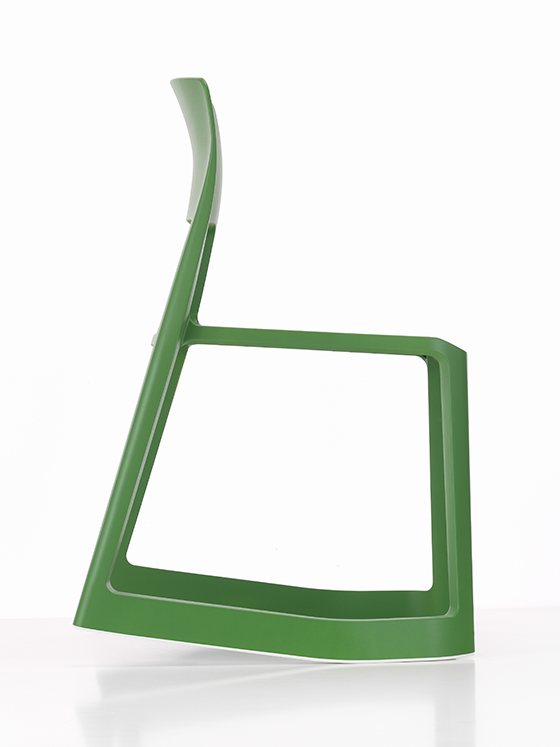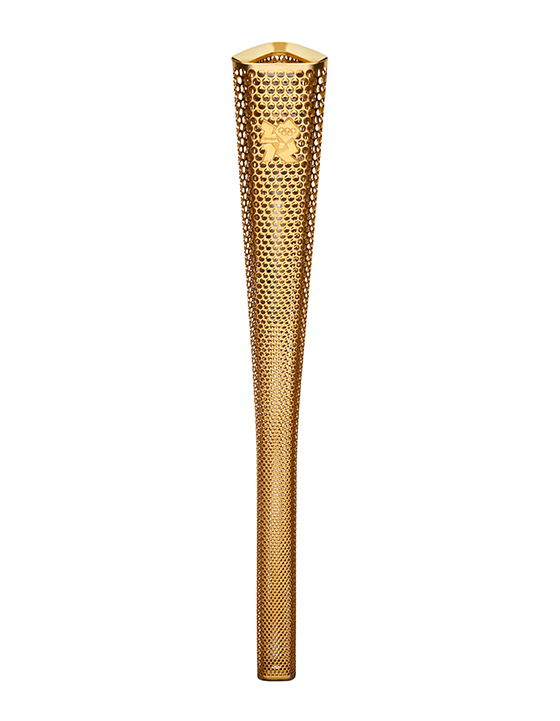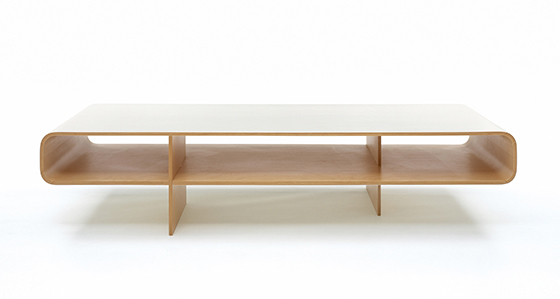Material Tendencies: Edward Barber & Jay Osgerby
Texte par Anita Hackethal
Berlin, Allemagne
22.02.16
Established in 1996, British design duo Barber & Osgerby have worked across a variety of disciplines, including industrial design, interiors, architecture and site-specific installations.
Edward Barber and Jay Osgerby - Photo © Architonic / Anita Hackethal
Architonic recently met up with Edward Barber and Jay Osgerby at the Stockholm Furniture and Light Fair 2016. As this year's Guest of Honour, they showcased their recent works in the context of a wintery installation.
Jay Osgerby: The idea for the lounge was to create our interpretation of what winter in Stockholm is like. For us it was really important that it feels quite light and calm, considering the fact that there is hardly any daylight during the winter here.
Triptych Installation at Stockholm Furniture & Light Fair 2016 - Photo © Gustav Karlsson Frost
Edward Barber: Together with Swedish company Nordifa, we have made these giant, white felt screens that give a bit of an acoustic and also visual softening. The moulded polyester felt combines the natural feeling of the wool fibres, compressed with recycled PET that serves for giving structure. The felt curtains divide the space into three areas – relaxing, meeting and working – that are connected through these Japanese lanterns that we designed recently for the company Ozeki, based in Gifu. They are made of very light paper, so from a distance they seem to be floating.
Hotaru lanterns - Photo © Mark Whitfield and Twentytwentyone
Which material would you choose if you had to restrict yourselves to working with just one for the next three years?
Edward: I think for me it would have to be solid wood. I find it has the most beautiful tactility and warmth and soul. And you can do so many things with it. Depending on the type of wood and its density, it can have so many different characters. As a child I was always making things out of wood, because that was the easiest thing. You could put a nail in it or screw into it, you could glue it… You could always make something, whereas metals and stones were very hard to deal with.
Jay: Difficult! There are so many to choose from. Wood is just a small word for a huge genus of material. It is endless. On the one hand there is the super-hard wood that is more like metal or stone, and then you have wood that is so soft, you can do things to it with your bare hands. I also think aluminium is a great material, because it does not degrade. Ok, it uses energy to melt in the first place, but once it is created, you can use it endlessly. It is quite easy to machine and work with, and we are huge fans of anodising, which is a process that works super well with aluminium.
Bodleian Libraries Chair for Isokon Plus, 2015 - Photo © Barber & Osgerby
When doing a project where the choice of material is open, at what point within the design process do you decide in favour of a specific material?
Jay: It is the first thing. You don’t normally think of a project and then give it a material. The two are inextricably linked, unless it is a type of plastic or a moulding.
Edward: Not always though. I actually think there is only one material that suits the project that you are working on. The project finds its own material. When looking at our design projects that are presented here, you could not really make them of any other material. So the material selection seems quite a logical thing at the end. I don’t think there are many objects that you can substitute a different material for.
Collector Cabinets for Glas Italia, 2015 - Photo © Barber & Osgerby
Jay:We usually like to show the material’s original features. Of course, many materials can be painted and finished to disguise their materiality, for example the Button Stool for B&B Italia. The base could be made of a variety of materials, because in the end it is lacquered. But that is an exception to our type of the work. Mostly you can feel it or touch it, and you know what it is.
Button tables for B&B Italia, 2014 - Photo © Barber & Osgerby
Edward: It also depends on the way of production. If you have a product for everyday use, it is pretty clear what the material might be. For example, this Tobi-Ishi Table for B&B Italia is made from wood, but you could also make it from stone and it would look great. Though then it becomes less practical and more expensive. I think our passion really is to produce things in large numbers. It is a challenge to make something that is really good for mass production. There are a lot of different processes involved. If you can make a product that can be easily produced and sells very well, because it is functional and it is biased correctly, there is something really rewarding about that.
Tobi Ishi table for B&B Italia, 2014 - Photo © Barber & Osgerby
Jay: We discuss our design closely with the manufacturer and visit the source of the material or the factory that it will be made in. For us it is an ongoing education, as well as a profession. If you really understand the making process, then you are in a much better position to be able to design properly. We are fortunate to have the exposure to this type of making and manufacturing, which is really unusual in society generally. Nowadays people are so disengaged from the process.
Olio tableware for Royal Doulton, 2015 - Photo © Barber & Osgerby
Do you think the future use of material will change?
Edward: Recently we have been seeing 3D-printing, which we have used for many years, but only in prototyping. Now you can print in steel and you can print in porcelain, but although it is steel and it is porcelain, the material is not the same as if you cast porcelain in a mould or if you forge steel. Up until very recently, if you printed a chair, it would not really serve its purpose: It would fall into pieces in no time. But I think the time has now come where technology is at a point where you could actually 3D-print furniture properly. It is still too expensive, but in a rational amount of time it will also be the right price. This has never really interested us before, apart from prototyping, but what we’ve seen in the last few days is something that we might consider using for an actual end product.
Pilot Chair for Knoll International, 2015 - Photo © Barber & Osgerby
Do environmental effects influence your choice of materials?
Jay: In a way it can do. In fact, all of our manufacturers actually adhere to strict environmental criteria. I think also the people that we tend to work for share our idea to design something that is for life – for your life and for successive lives. Our aim is never to design things that will promptly be thrown away. We want people to get to like the object even more after they’ve bought it – the opposite of fashion. That is the plan.
Sofa Collection for Knoll International, 2013 - Photo © Barber & Osgerby
Is there any material that you could immediately reject?
Jay: Well, there are a lot of plastics that I really hate.
Edward: Diamonds. We were actually offered a couple of projects with diamonds, but the procurement of diamonds is a very shady sort of business, so we decided that we did not want to work with that.
Iris table for Established & Sons, 2008 - Photo © Barber & Osgerby
Tip Ton Chair for Vitra, 2011 - Photo © Barber & Osgerby
Olympic Torch, London 2012 - Photo © Barber & Osgerby
Loop Table for Isokon Plus, 1996 - Photo © Barber & Osgerby
Tab Table lamp for Flos, 2011 - Photo © Barber & Osgerby
....
Look out for more Material Tendencies reports. We’ve captured insights from renowned designers and we’re delighted to be able to share them with you, as part of our ongoing Architonic Trend Analysis series.
....
